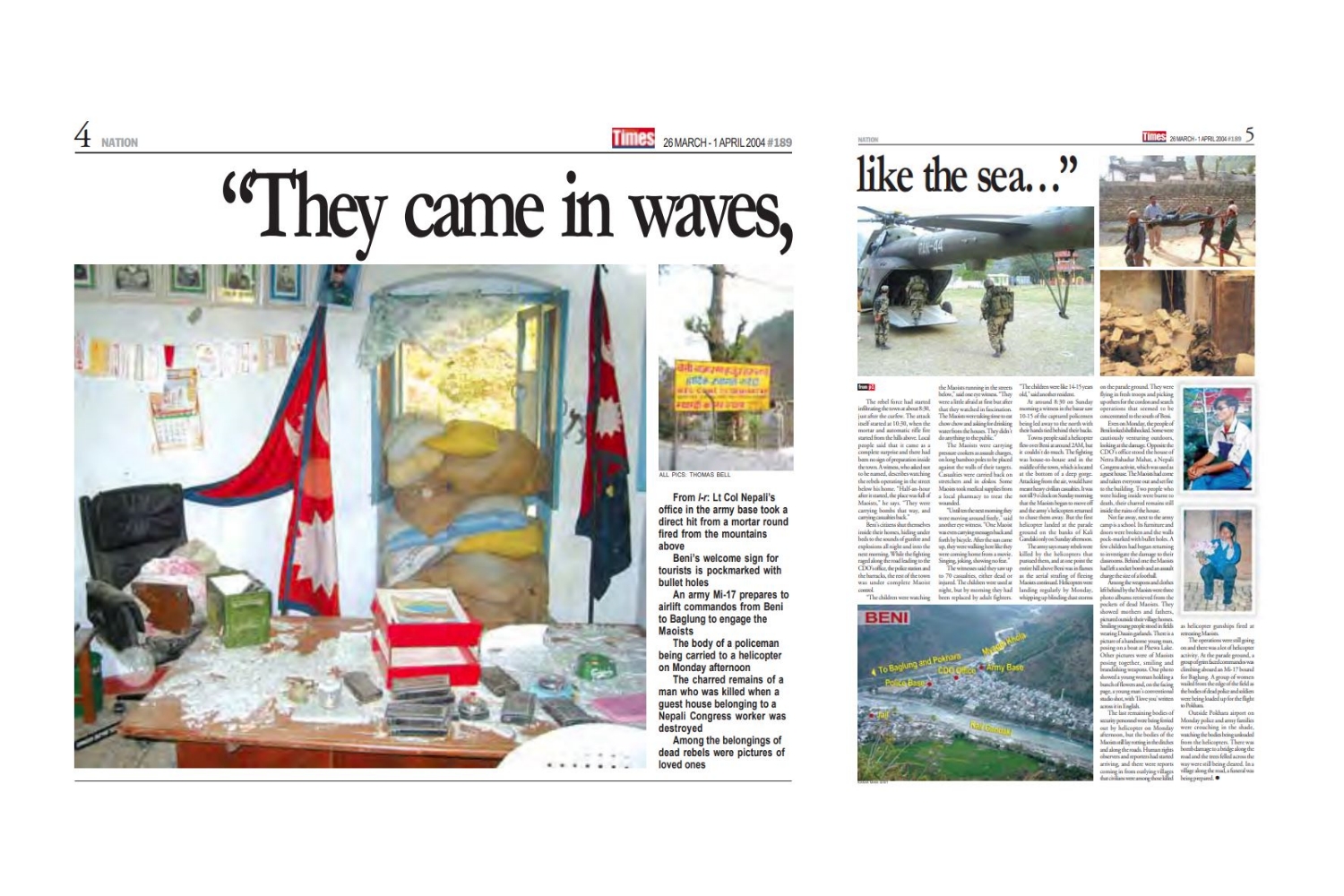2004
The Maoist war was at its peak, the rebels were attacking one district headquarters after another, people were being disappeared, Nepalis were killing fellow Nepalis.
King Gyanendra had dismissed Prime Minister Sher Bahadur Deuba for failing to hold elections and negotiate with the insurgents. By this point, the Maoists were also organised into the People’s Liberation Army (PLA), a centralised military force with battalion-level formations. The eastern division was led by Nanda Kishor Pun (later vice president), and the western division by Barshaman Pun (later finance minister).
The night of terror which has since been dubbed the Battle of Beni started at 10:30PM on Saturday, 20 March, and the fighting continued until 6AM the next day.
Soldiers and police guarding the police station fought until ammunition ran out, the CDO building next door was reduced to rubble, and the army camp was the only government building standing, albeit barely.
Thomas Bell, a Kathmandu-based correspondent for the Daily Telegraph, was one of the first foreign journalists on the scene, and had a dramatic eyewitness account in Nepali Times issue #189:
‘Lt Col Ragu Nepali’s office with its sandbagged windows is a wreck. He estimates there were at least 5,000 Maoists involved in the attack: frontline fighters, militia and porters.
“They came in waves, like the sea, one after another, one after another,” said Lt Col Nepali, looking exhausted after two nights without sleep. “There were more women than men. And many, many child soldiers, below 14. I saw them while I was shooting back.” There were six Maoist bodies inside the army base and Nepali points them out: “They are all young children, this one is a girl.”…

After the sun came up, they were walking here like they were coming home from a movie. Singing, joking, showing no fear.”’
Accompanying the piece was a photograph by Bell of Jamila Khatun washing blood from her shopfront in Beni while her three-year-old daughter Sajita watched. The picture would go on to become an iconic image of the war and was included in Nepali Times’ publisher Kunda Dixit’s The People’s War trilogy, a pictorial documentation of the armed conflict in Nepal.
In total, 19 civilians, 17 police and 14 soldiers were killed in the Beni attack, while at least 90 Maoists were slain. There were prisoners on both sides including Matrika Yadav from the Maoists.
The Battle of Beni was one of the biggest attacks on a district headquarters, and a turning point in the conflict. Following Beni, the Army bolstered the defence of its garrisons, and the Maoists shifted to ambushing security convoys along the highways.
UN Secretary-General Kofi Annan who had been to Nepal in 2001 expressed serious concern and offered to help find a solution. In our editorial that week, we said:
‘Kofi Annan has echoed the sentiments of nearly all Nepalis: that there is no military solution to the conflict.’
The United Nations went on to set up the United Nations Mission in Nepal (UNMIN) in 2007 to support the peace process following the end of the war. But the body was largely criticised for overstepping its mandate, disagreements over exit strategy, and perceived bias towards the Maoists, among others.
Maoist supremo Pushpa Kamal Dahal in a leaked 2009 video even boasted of deceiving the UNMIN about the actual number of their fighters to 35,000 when the real figure was closer to 7,000-8,000.




